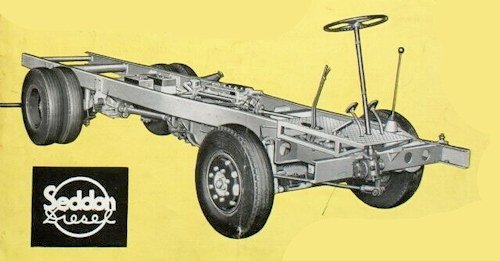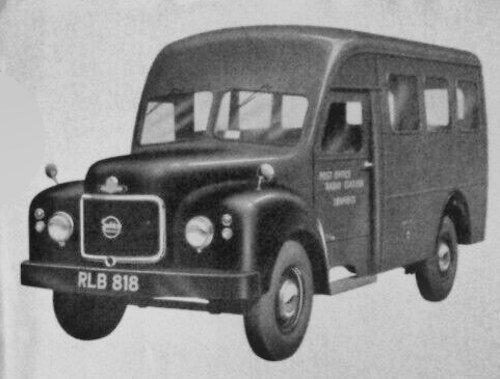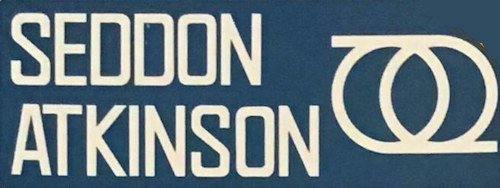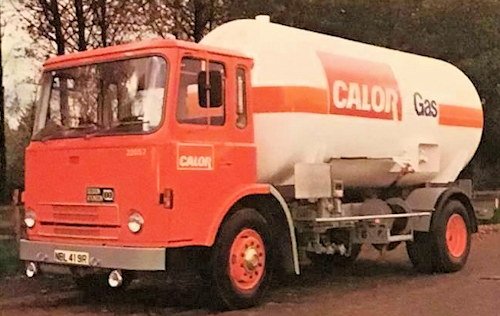Seddon commercial vehicles History
Great Britain from 1938 to 2009

The Seddon Company Produced commercial vehicles in Lancashire Britain, from the 1930 to the 2000s under various name changes and Company take overs.
History
The company Foster & Seddon, in Salford, decided to enter the commercial vehicle market in 1938, the origin reverts back to 1919, when as Foster & Seddon operated as road transport hauliers and commercial vehicle distributors.The founders were E.W. Foster, T. Seddon, PEI. Seddon and H. Seddon all held the position of Chairman of the board during this time.
As road transport operators Foster and Seddon gained excellent experience of the vehicle requirements of operators.Then in 1938 the group of people agreed to build their, own commercial vehicle using the knowledge they possessed, this was Foster and Seddon.
The first vehicle was a 6-ton payload capacity chassis, diesel engine powered, designed for a full-length platform, and at the sametime endeavouring to keep within the unladen weight of 50 cwts for the maximum allowable speed of 3 a 6-ton payload forward-control Perkins P6-engined diesel truck for legal operation at up to 30 mph 48km/h from the time.
Later the company realising that a single wheelbase limited the vehicle's operating capabilities, decided therefore to offer a shorter wheelbase, making two wheelbases available.
By 1940, this model line was still being produced up to World War II. Although the Ministry of Supply did restrict the company to constructing commercial vehicles for the country's civilian operations under a specific authorization, Seddon produced trailers for the combat forces during the war.Unfortunately, Seddon's received their first export contract for four vehicles for Corsica in 1940 these were destroyed at the London docks awaiting shipment during the first full scale bombing attack on the city.
After the war the company decided to change their name to Seddon Motors Limited, and eventually restarted production,now reaching around 8 chassis per week.
The premises in the Pendleton area of Salford was now too small so 1947 production was transferred to Oldham. it was necessary to acquire new compact premises. resulting in the choice of Woodstock factory, Oldham, Lancashire. now as Seddon Lorries Ltd,
In 1950 a 3-ton rigid using a 4-cyl Perkins diesel engine was and once more changed their name to Seddon Diesel Vehicles Limited in 1951 with passenger versions offered on the export market.in 1952 a new passenger chassis with mid- mounted 6-cyl Perkins diesel engine was introduced.Production grew steadily but Seddon’s required more capital and by 1974 now offered shares to the public.

In 1954 Seddon’s devoted time to research into fibre glass for the manufacture of components It was 1964 when the major break-through came, it was the introduction of the very successful the 1 1/4-ton bonneted '25' model was announced and fibreglass introduced in cab construction.Four ranges introduced at the Commercial Motor Show of the same year. By 1956 wrapround windscreens had begun to appear and in 1957 new lightweight plastics cabs were advertised for Mk 12 and Mk 15 models. It was a great tribute to the designers and engineers to produce such a range. models included a 14 tons GVW version of the Mk 15 and the 'Pennine' Mk 19 passenger chassis powered by a 98bhp horizontal under-floor AEC diesel engine. For 1959 trailing-axle 6-wheeled rigid goods models and a 30-ton version of the 'Sirdar' offered, while a bonneted 6 x 4 artic for up to 45 tons GCW was added in 1961.

More updates occurred in 1964 when the '13: Four' rigid, using a new Motor Panels cab and Perkins 6.354 diesel engine. In 1965 the '16: Four' was announced, this with a powerful Perkins V8 diesel producing 170bhp. By 1967 a V8-engined artic tractor, the SD4, had been up-rated to 28 tons gross and was joined by Gardner and Rolls-Royce engine versions for 32 or 38 tons gross.
In 1970 the company was now as Seddon Motors Ltd and the 32/38-ton tractor, carrying a version of the standard Motor Panels cab, could be had with a turbocharged Rolls-Royce diesel engine.Passenger chassis was now built by Pennine Coachcraft Ltd, and a new version The 'Pennine RU', with rear-mounted Gardner engine.

Next came the amalgamation of the company's activities with those of Atkinson Vehicle Limited forming the well-known Seddon Atkinson Vehicles Limited probably one of the best high quality vehicle manufacturers in the country from the time. led to its takeover in 1970, the two ranges remaining separate.
A liaison was with Magirus-Deutz (Great Britain) Ltd which led to a single Seddon-Deutz goods model.
A further merger in 1974 of the company with the American International Harvester Corporation in the same year as the merger had just been completed with Atkinsonsbecoming Seddon Atkinson Vehicles Ltd.The heavyweight models introduced in 1975 was available in 4-6 and 8- wheeled form as the Seddon-Atkinson '400'-Series. Using Cummins, Gardner and Rolls-Royce diesel engines, The 200'-Series, using a 134bhp International 6-cyl diesel engine, added and in 1978 the first '300'-Series 6-wheeler for 24 GVW was constructed.
Later, a '300'-Series artic tractor unit was also offered. The smaller '200'-Series could only be had in this form as a conversion.in 1980 the '401 '-Series artic tractor, a modified version of the '400'-Series, employing light- weight components.
By 1984, International Harvester sold Seddon Atkinson to Enasa of Spain, which had failed to materialize.Sales of Seddon Atkinsons dwindled through the 1980s. Both the 400 and 401 series received heavy complaints over quality with insufficient rust protection on the cabin. In 1991 Iveco took over Enasa and acquired Seddon Atkinson as part of the deal. In December 2009, Iveco announced that the Seddon Atkinson brand would be withdrawn.

